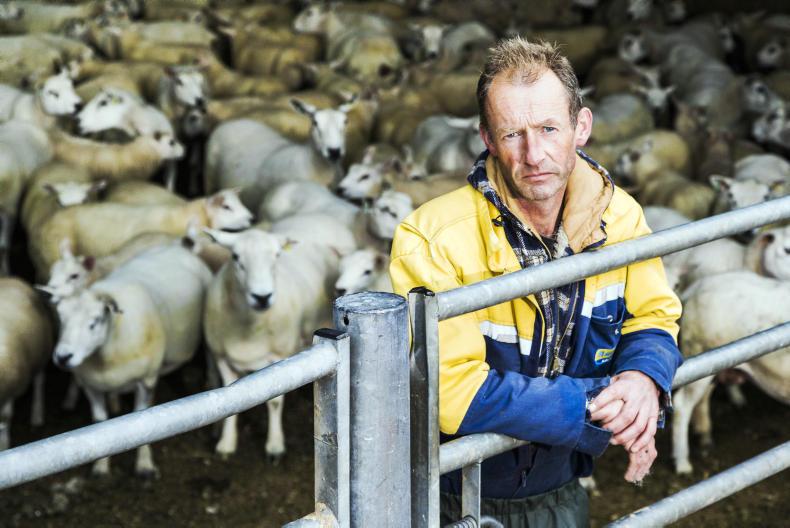When looking at the reports on prime lamb sales from the Caledonian Mart in Stirling, it is not unusual to see the name Meikle Seggie among the leading prices. It is also not unusual to see the name Meikle Seggie among the leading prices for 52-weeks of the year.
Meilke Seggie Farms, just outside Kinross in the burgh of Perth and Kinross, is owned and farmed by Iain Campbell. Iain farms 1,000 acres (300 acres of which is less-favoured area) on which he runs 1,600 ewes and 100 sucklers.
Uniquely, he aims to sell lambs year-round and pay a visit to the Caledonian Mart at least once a week. He also has three calving periods too, just for good measure.
Complementary
On every farm the, most important decision is to operate a system that suits the farmer. While some farmers choose to focus on one particular stock type, such as sheep or sucklers, Iain believes the two complement each other.
“To be honest I wouldn’t have it any other way and I wouldn’t want to keep them separately. To my mind, I think there’s a benefit to mixed farming rather than being entirely focused on one,” he says.
The suckler herd is a mix of breeds but it is predominately made up of Angus, Simmentals and Belgium Blues. They calve indoors and are split up into three main blocks with 33% calving in spring, 33% in summer and 33% in winter.
Iain explained the split is essential for management purposes.
“Shed space is limited on the farm, so by splitting up calving I can ensure I don’t overcrowd sheds and I don’t end up overstretched labour-wise either. I also lamb outdoors and that means I can easily manage 1,000 ewes by myself.”
Between lambing, calving and all other jobs that need to be carried out, Iain has made the conscious decision to set-stock the farm. This allows him to make the most of his available labour time. It is also where he finds an advantage in mixed farming, as cattle and sheep grazing alongside one another have been shown to increase pasture productivity.
The 52-week lamb supply
The ability of Iain’s farm to sell a constant supply of lambs year round is what sets him apart from most other farms.
“I suppose it happened accidently about four years ago,” Iain says, “but I’ve stuck with it since then.”
The flock of 1,600 ewes is a mix of varieties; 100 Suffolk crosses, 200 Blackface ewes, 500 mule ewes and 800 Texel crosses.
There are several key-components that combine together to make Iain’s system of operation possible. Firstly, lambing takes place from February through till May, a total of 16 weeks. The first to lamb are the Suffolk crosses and these lambs are targeted to be sold after 12 weeks, before lambing has even finished.
To achieve this extended lambing period, Iain requires tups that have sufficient stamina to last throughout an extended breeding season.
“The tups will go to the ewes from August onwards, once the lambs have been drafted off, and there’s no set period that they’ll be with them. I use Beltex tups because I find keeping the fat off them is the hard part rather than worrying about them losing condition,” Iain explains.
Another major part in ensuring a sufficient supply, is producing enough lambs and ewes. Iain is well covered in that respect, with impressive scanning rates throughout his flock. This year the mules scanned at 195%, Texels at 200% and Blackfaces at 160%.
The final and most important part is the ability to handle the mammoth and sustained workload. Achieving a year-round lamb supply is a marathon, not a sprint and it requires a lot of commitment.
“It’s time consuming, that’s for sure,” Iain says. “I’m drawing lambs to the mart at least once a week and sometimes twice when there’s cattle to be sold.”
On top of the time requirements to bring the lambs to market, Iain must also draft off approximately two to three hundred lambs every week. Crucially, he has a mobile handling system that is well set up in a shed throughout the summer to make this possible.
High demands means higher demand
However, the additional labour input is rewarded when it comes to market time. Many butchers buy directly from the Caledonian Mart and Iain’s stock is usually in high demand as it comes with certain guarantees.
Not only is Iain able to provide lamb at times of the year when supplies are limited and prices are at their highest, but buyers are also assured of the lamb quality. The level of consistency from Iain’s lambs means they are always in demand even when supplies are not tight.
Take last week for example, from the 500 lambs the mart sold, he secured one of the leading prices of £110 as well as the top price per kilogramme of 250p/kg (average was 214.6p/kg).
The majority of these lambs will have been sold from a grass only diet, but those that do not achieve the required weight or conformation off the grass will be pellet-fed.
Quality
In addition to having the supply, Iain also has a high-quality product as there are no major disease or health issues within the flock.
“I try to handle them as little as possible. Most years, the only thing the sheep receive is the required fluke doses,” he says.
“About six years ago we started using Footvax on all the ewe lambs and this has made a major difference. Lameness incidence is down now to about 3% whereas it was running at about 10 to 15%.”






 This is a subscriber-only article
This is a subscriber-only article








SHARING OPTIONS: